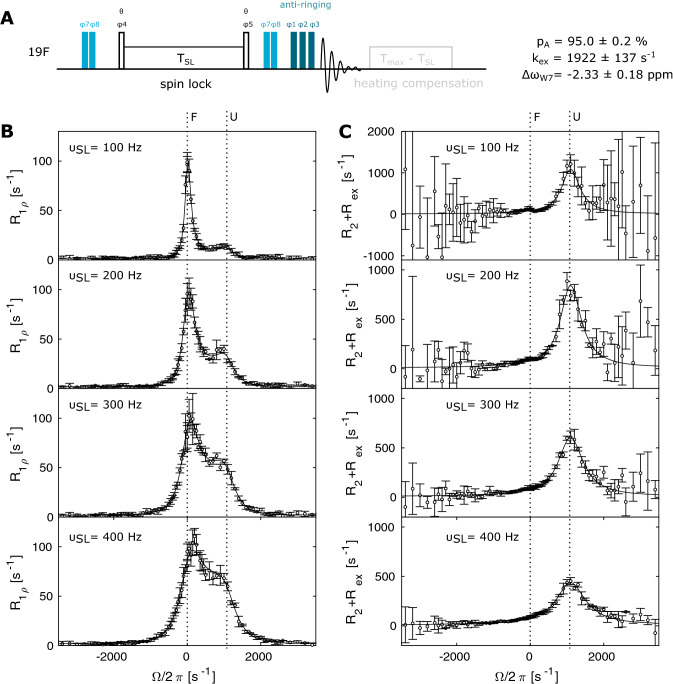Fig. 4.
19F off-resonance R1ρ experiment. a Pulse sequence for the 19F off-resonance R1ρ experiment. Narrow rectangles indicate 90° pulses. The phase cycle is φ1 = x, φ2 = [− x, − x, x, x], φ3 = [x, x, x, x, − x, − x, − x, − x, y, y, y, y, − y, − y, − y, − y], φ4 = [y, − y], φ5 = [− y, y], φ6 = [x, − x], φ7 = [x], φ8 = [x, − x], φrec = [x, − x, − x, x, y, − y, − y, y]. The flip-angle of pulses that flank the spinlock block is θ, which ensures that the magnetization is aligned at the angle of the effective magnetic field. This angle depends on the offset and the spinlock power. The pulse pairs with phases φ7/φ8 are used to cycle the magnetization to ± z before the spin lock period and back to + z after the spin lock, which ensures that the rotating frame relaxation is symmetrically measured both above and below the transverse plane at all offsets. b R1ρ off-resonance relaxation dispersion profiles and c corresponding R2 + Rex contributions for W7 at spin-lock fields of 100 Hz, 200 Hz, 300 Hz and 400 Hz. Solid lines show the best fit to a two-state Laguerre approximation. The offsets of the folded (F) and the unfolded (U) state are indicated with dotted lines. Error bars show experimental uncertainty (1 standard deviation)

